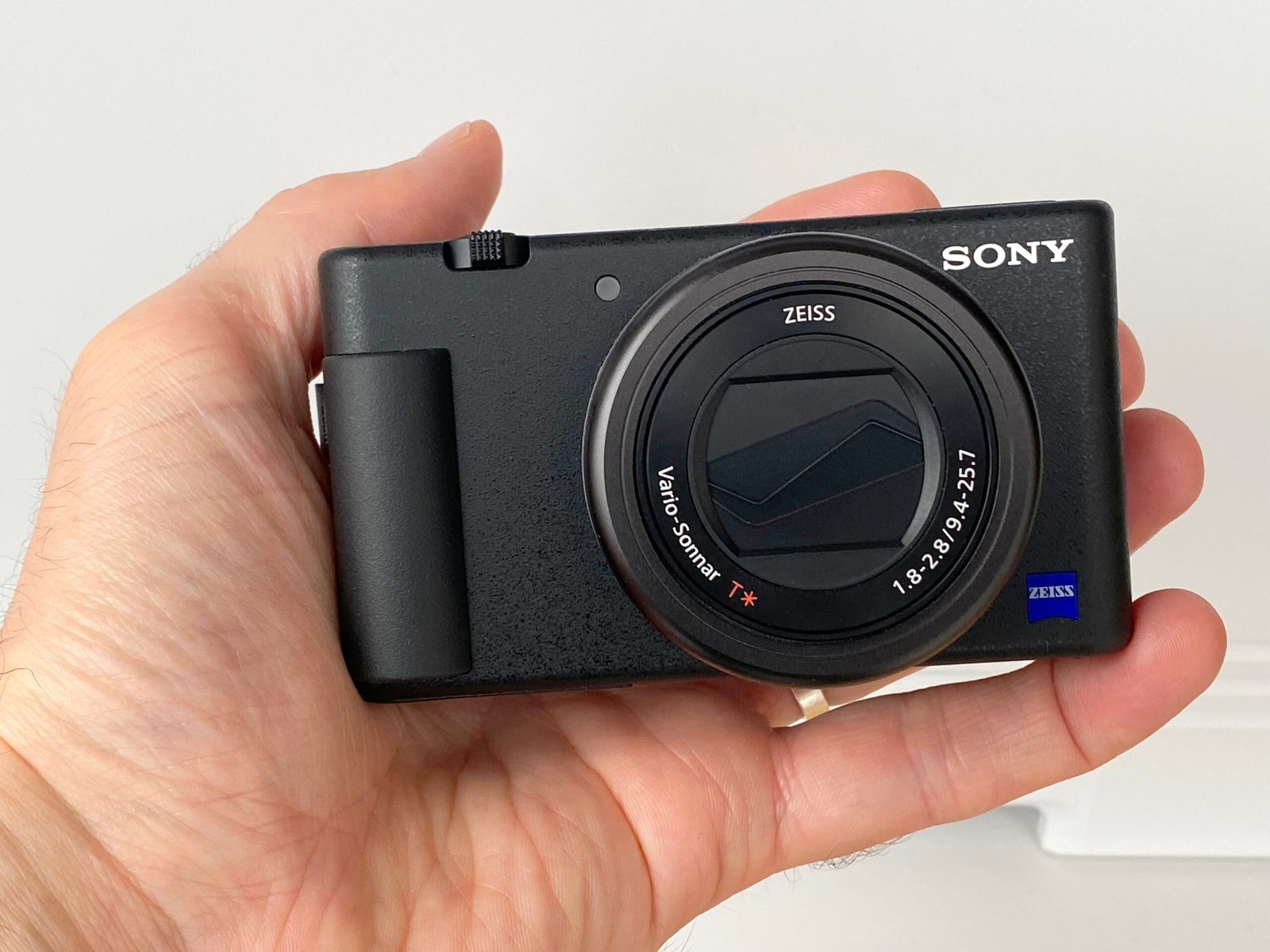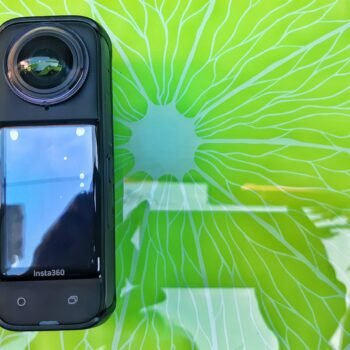Compact cameras are making a real comeback. While phones handle everyday snaps, dedicated compacts are seeing surprising new interest. CIPA data shows sales actually jumped 115% year-over-year. That proves people still want real cameras.
This trend isn’t just about old memories. New premium models focus on bigger sensors and physical controls you can feel. They offer abilities top phones still lack. Think Fujifilm’s viral X100VI or Sony’s powerful zoom models. These represent today’s best compact camera options. They blend easy carrying with serious features perfectly. Finding your best compact camera in 2025 means looking for that unique mix.
TL;DR – Quick Summary of Top 5 Cameras
- 📸 Fujifilm X100VI (Top Pick): 40MP APS-C sensor, hybrid viewfinder, shoots 6K video.
- 🔍 Sony RX100 VII (Zoom King): Massive 24-200mm zoom, 20fps bursts, stacks power into a 1-inch sensor.
- 🏙️ Ricoh GR IIIx (Street Star): 40mm f/2.8 lens, APS-C guts, slips right into pockets.
- 🎥 Sony ZV-1 (Vlog Ready): Flip-out screen, product showcase mode, 4K/30p video.
- 🌊 OM System Tough TG-7 (Adventure Proof): Dives to 15m, killer macro modes, tough build.
Why Buy a Compact Camera in 2025?
Sensor Superiority Makes the Difference
Your phone is handy, but it can’t beat premium compacts on sensor physics. Take the Ricoh GR IIIx street shooter. It uses a 24MP APS-C sensor way bigger than the iPhone 15 Pro’s main one. This means better low-light shots, wider dynamic range, and more image detail. It’s a strong contender for best compact camera right now.
Specialized Features Smartphones Can’t Match
Physical zoom still changes everything. The Sony RX100 VII zoom gives real 8.3x optical reach with no quality drop. Features matter too. For example, the X100VI has in-body image stabilization (IBIS). This offers steadier shots than digital stabilization alone can manage.
Intentional Photography Experience
There’s something powerful about dedicated controls. Physical dials and buttons encourage thoughtful composition rather than quick snapshots. The Leica D-Lux 8’s tactile interface creates a more deliberate shooting experience that many photographers find refreshing.
How We Tested & Selection Criteria
We tested cameras based on how they actually handle real shooting, not just their specs. Each model went through practical checks covering street photography, travel use, dim lighting, and video work.
Key Metrics Table:
| Metric | Importance | Top Performer |
| Image Quality | Critical | Fujifilm X100VI (40MP) |
| Zoom Range | High | Sony RX100 VII (24-200mm) |
| Low-Light Performance | High | Ricoh GR IIIx (f/2.8) |
| Portability | Medium | Ricoh GR IIIx (262g) |
Best Premium Compact: Fujifilm X100VI

The Fujifilm X100VI review reveals why this camera became TikTok famous. Its 40MP APS-C sensor delivers exceptional image quality in a beautifully crafted retro body. The hybrid optical/electronic viewfinder provides flexibility that pure EVF cameras lack.
Key Features:
- 40MP APS-C sensor with IBIS (first in X100 series)
- Hybrid viewfinder system
- Film simulation modes for instant creative looks
- 6K video recording capability
Drawbacks: Fixed 23mm lens limits versatility, $1,599 price point, persistent stock shortages.
Perfect For: Travel photographers wanting DSLR-quality images in a compact, stylish package.
Best Zoom Compact: Sony RX100 VII
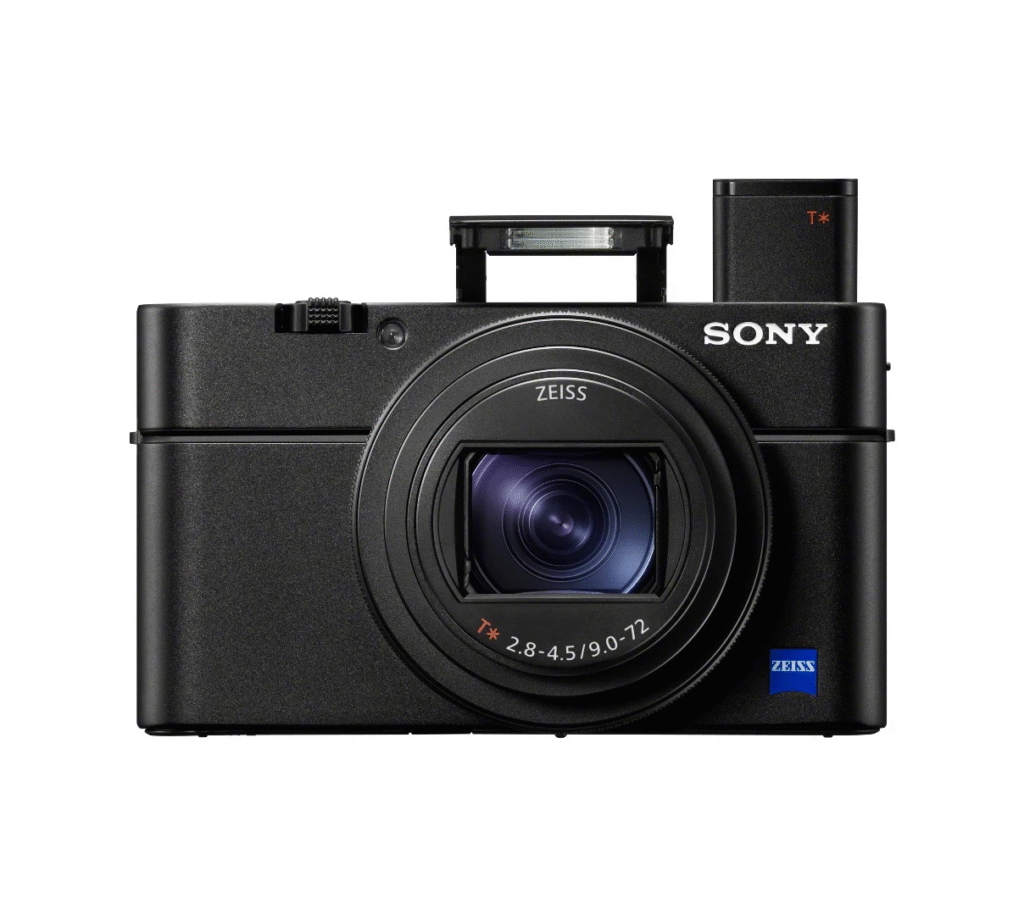
This camera really shows great things fit in small bodies. Its 24-200mm zoom handles everything from wide views to far-off details, keeping strong image quality.
Key Features:
- 24-200mm zoom in truly pocketable body
- 20fps burst shooting with excellent autofocus
- Real-time Tracking AF for moving subjects
- 4K video with advanced stabilization
Drawbacks: No weather sealing, premium price ($1,200+).
Alternatives: Canon PowerShot G7 X III offers brighter lens but shorter zoom range.
Best Street Photography Compact: Ricoh GR III/IIIx

Street photographers have a secret weapon. The GR series delivers APS-C image quality in a body that slips right into a pocket. Its 28mm (GR III) or 40mm (GR IIIx) lenses give classic street views.
Key Features:
- 28mm or 40mm APS-C fixed lens
- Snap focus for quick shooting
- HDF (Highlight Diffusion Filter) for unique looks
- Incredibly compact form factor
Drawbacks: No viewfinder, limited video capabilities (1080p only).
Why It Shines: This is the “ultimate stealth shooter” – small enough to be unnoticed, powerful enough for serious photography.
Best Vlogging Compact: Sony ZV-1

Content creators need different tools. The vlogging camera ZV-1 was designed specifically for video creators, with features that make solo shooting easier and more professional.
Key Features:
- Fully articulated touchscreen
- Product showcase mode for object focus
- External microphone support
- Excellent face/eye tracking
Drawbacks: No 4K/60p recording, average battery life.
2025 Alternative: Canon PowerShot V1 offers 1.4-inch sensor and wider lens options.
Best Budget Compact: Canon PowerShot SX740
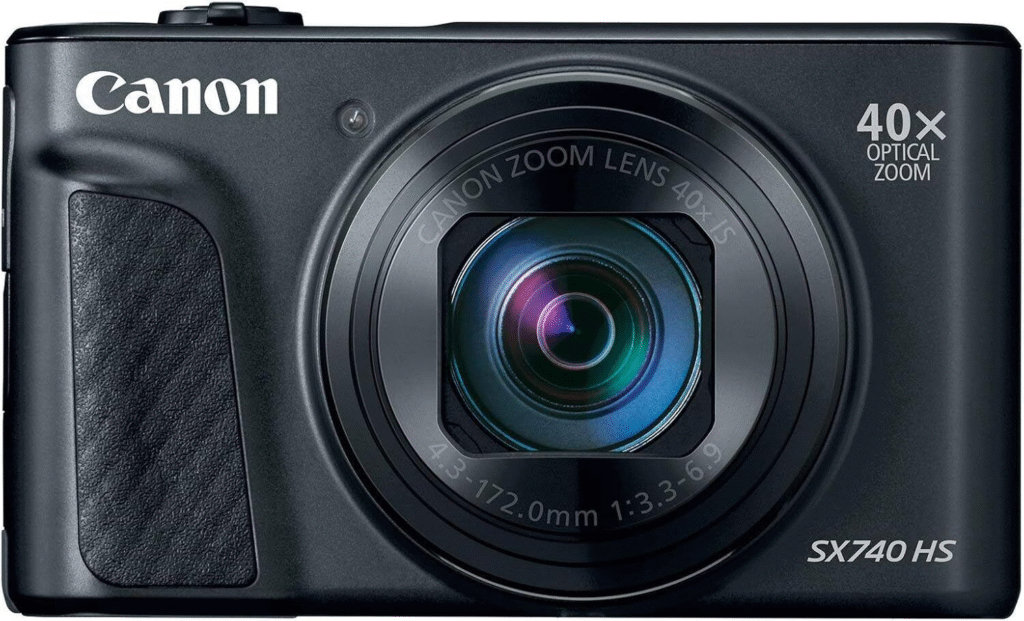
Not everyone needs premium features. The budget point-and-shoot SX740 delivers incredible zoom range at an accessible price point.
Key Features:
- 40x optical zoom (24-960mm equivalent)
- Tilting touchscreen
- $379 price point
- Wi-Fi connectivity
Drawbacks: Tiny 1/2.3-inch sensor, poor low-light performance.
Use Case: Perfect for casual users wanting ultra-zoom for vacations and family events.
Best Rugged/Waterproof: OM System Tough TG-7
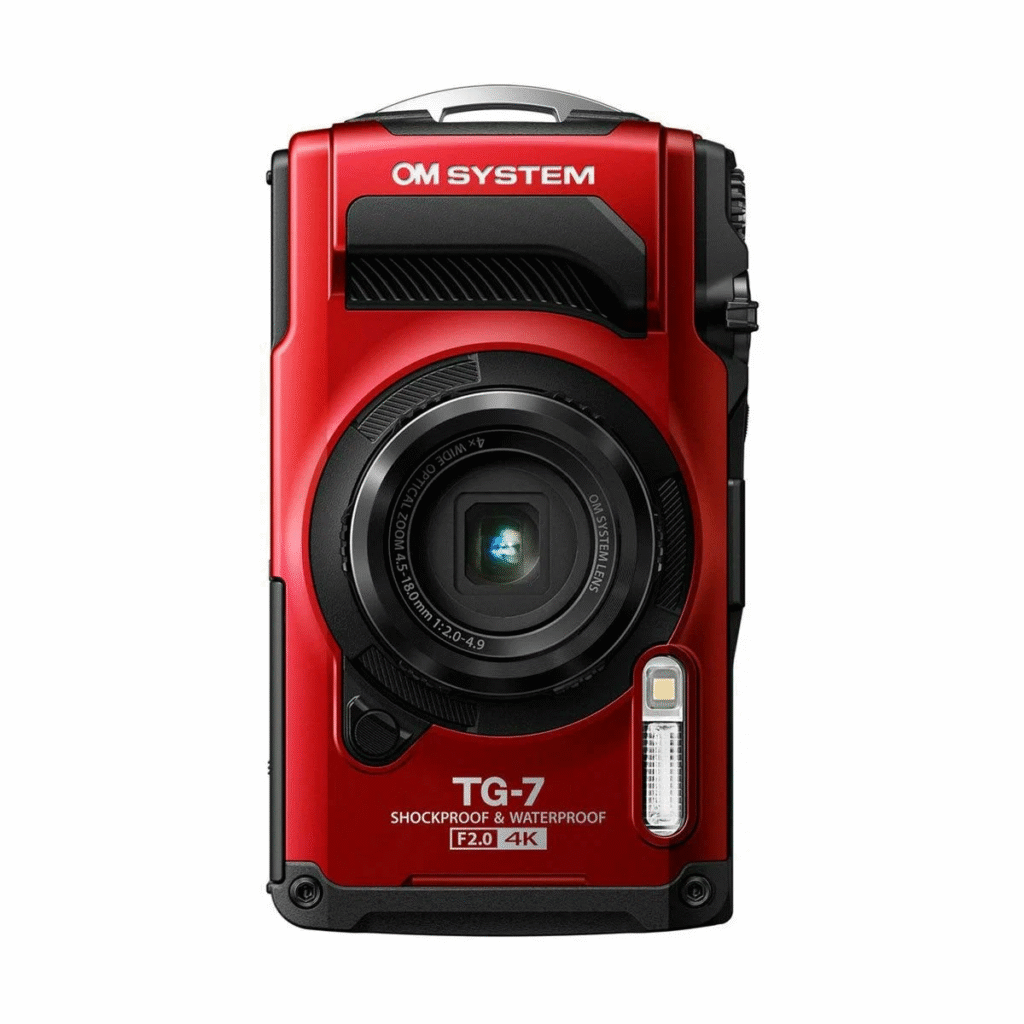
Adventure photographers need tough tools. The waterproof compact camera TG-7 handles extreme conditions while maintaining decent image quality.
Key Features:
- 15m waterproof rating
- 2.1m shockproof construction
- Microscope modes for macro photography
- Built-in GPS and compass
Drawbacks: 12MP sensor, soft images at telephoto end.
Ideal For: Snorkeling, hiking, beach days, and any situation where camera safety matters.
Honorable Mentions
- Leica D-Lux 8: Stylish camera with a bigger sensor and 24-75mm lens. Feels premium but priced at $1,495 – that’s steep.
- Panasonic Lumix ZS99: Travel zoom champ with huge 30x reach. Handles okay but gets tricky in poor light.
- Canon PowerShot V1: Built for vloggers. Strong video tools, but simpler stills handling.
Buying Guide: Sensor Size, Lenses & Key Features
Sensor Comparison
Understanding sensor sizes helps make informed decisions:
- APS-C (X100VI, GR IIIx): Top image quality, stronger in low light
- 1-inch (RX100 VII, ZV-1): Solid mix of size and performance
- 1/2.3-inch (SX740, TG-7): Wallet-friendly, zoom range over sensor quality
Lens Priorities
Brightness matters more than zoom range. An f/1.8-2.8 lens performs better in low light than a darker f/4-5.6 zoom. Consider your shooting style when choosing between fixed and zoom lenses.
Must-Have Features
Modern compacts should include IBIS for steadier shots, 4K video capability, and articulating screens for flexible composition.
FAQs
Is a compact camera better than a smartphone?
Compact cameras hold clear advantages over smartphones in key areas. Optical zoom offers real reach without losing quality. Manual controls give you precise command over settings. RAW file editing unlocks greater creative flexibility after you shoot. Smartphones, however, really shine with computational tricks like advanced night modes.
APS-C vs 1-inch sensor – which is best?
Choosing between APS-C sensors and 1-inch sensors comes down to your needs. Pick APS-C (found in Fujifilm and Ricoh models) for better low-light shots and more control over background blur. Go with 1-inch sensors (like Sony uses) if you want serious zoom power packed into a smaller camera body.
Are compact cameras good for video?
Sony ZV-1 (4K/30p) and Fujifilm X100VI (6K), being the best compact camera models on the market, excel at video recording. Avoid the Ricoh GR IIIx for video work – it’s limited to 1080p resolution.
What’s the most pocketable premium camera?
The Ricoh GR IIIx (262g) genuinely fits in a pocket. The Fujifilm X100VI (521g) requires a larger bag or jacket pocket.
Will compact cameras be discontinued?
Unlikely. Niche demand continues growing, evidenced by Fujifilm X100VI waitlists and the 115% sales surge reported by CIPA.
Which camera is best for low light?
For low-light shooting in 2025, you have two top contenders. Fujifilm’s X100VI brings an f/2 lens plus IBIS for steadiness. Ricoh’s GR IIIx uses its bigger APS-C sensor paired with an f/2.8 lens. Choosing the best compact camera here really depends on whether faster aperture plus stabilization or sensor size helps you more in dim light.
Final Verdict
- Enthusiasts: Fujifilm X100VI is still the go-to model (good luck finding though!).
- Zoom/Vloggers: Sony RX100 VII or ZV-1 deliver pro-level video and zoom that fit in your pocket.
- Minimalists: Ricoh GR IIIx packs big image quality into a tiny body.
- Adventurers: OM System TG-7 is built for serious outdoor use.
Travel photography gear has changed a lot. Modern compact cameras are now real options instead of bulky DSLR gear. They keep creative control phones simply don’t offer. Street shooters wanting stealth, creators needing pro video, or adventurers demanding tough builds – there’s a compact made for those exact jobs.
Premium compacts aren’t replacing phones. They provide something else. Physical dials, optical zoom, bigger sensors, and special features create a more deliberate way to take pictures. In our world of instant digital snaps, sometimes the best compact camera is just the one that makes you pause and think.


